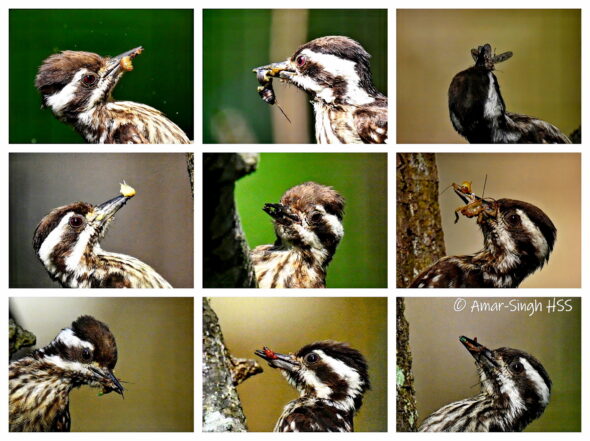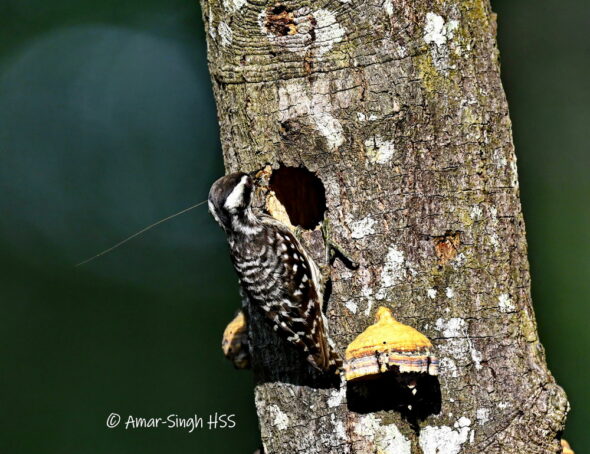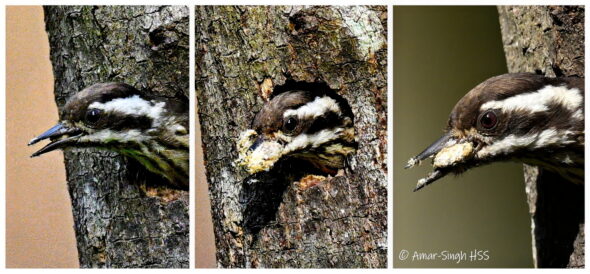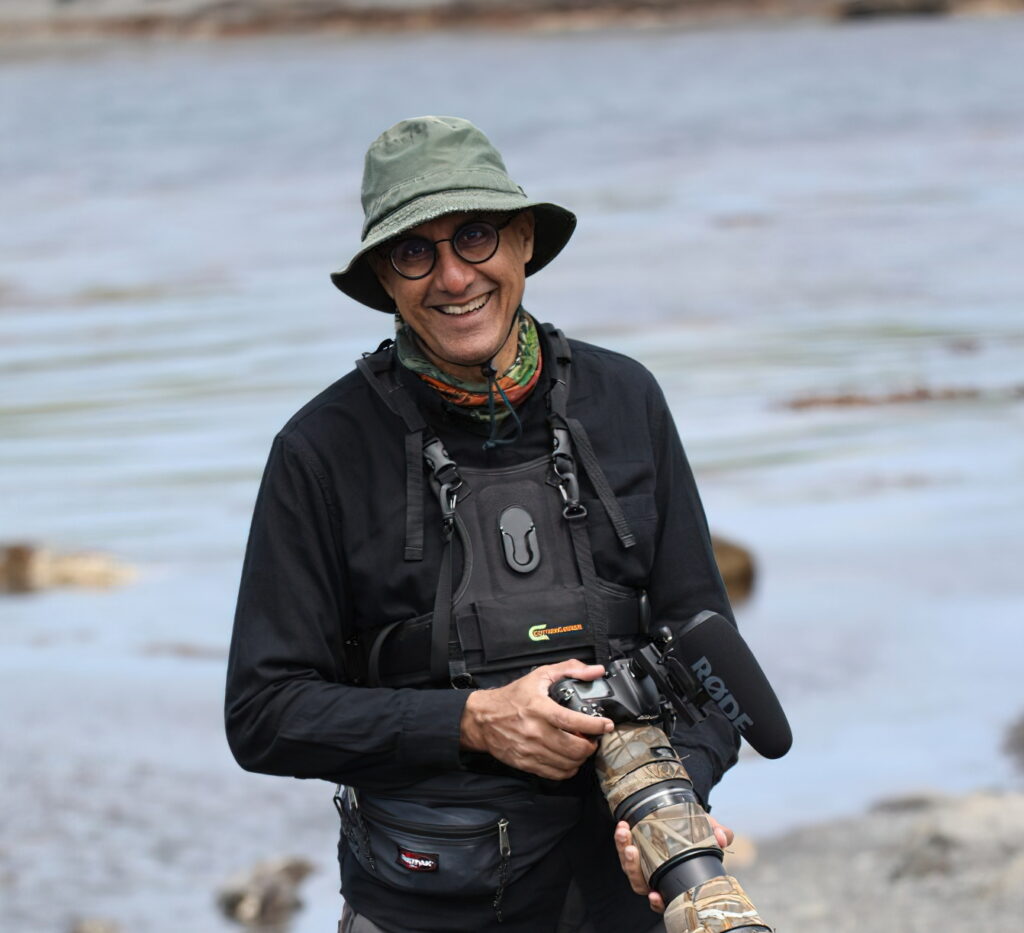A colleague was kind to inform me about nesting Sunda Pygmy Woodpeckers Yungipicus moluccensis at the Matang Mangrove Forest Reserve, Perak, Malaysia. I managed to visit on one occasion, 1 June 2023, and spent 2 hours (8-10am, with no break) observing the nesting behaviour. Some observations from this visit.
The nest was located in a dead mangrove tree a few meters off the boardwalk. The hole was excavated into the trunk of the tree, 3-4 meters above ground level. Wells (1999) notes that the tree species preferred in mangrove forests is not known. However, the majority of trees in this part of the forest (almost uniform) are Bruguiera sexangula (commonly called the Upriver Orange Mangrove, or locally Tumu Putih) and this could be the tree type used. See Images 1 and 2 showing the nest location.
 |  |
| Images 1: Overview of the nest location | Images 2: Closer view of the nest location |
Observations were made from some distance on the boardwalk using an 800mm lens. The adults appeared comfortable with the single human observer.
Both parents tend to the juveniles and bring food. It is usually not possible to distinguish male from female, as the red on the hindcrown of male is often obscured. But I occasionally observed both birds arriving at the nest one after the other; one waiting for the partner to complete feeding before alighting at the nest entrance. In addition, the frequency of feeding suggests both parents feed juveniles. Occasionally I have observed the red on the hindcrown of male.
The adult flight to the nest was careful. Occasionally it was direct, alighting near the nesting hole. More often they landed on a nearby branch and observed for predators. They then proceeded to land either above or below the hole and then crept down or up. The flight away from the nest was direct and fast into the forest.
Food Items brought to Juveniles
I observed 21 feeding episodes over the 2 hours giving a mean time of 5.7 minutes between feeds. The range was 1 to 16 min, with a mode of 1 min, and a median of 3 min.
The vast majority of the food items were invertebrates or insects.
Of the 9 invertebrates, 4 were worms that looked like maggots. Some others could be larvae.
Of the 9 insects, 3 were crickets, 1 large fly, 1 Woodlouse, 1 winged insect.
One episode was fruit, small berries.
2 food items were unknown (not seen well).
The animal prey appeared to have been processed by the adults.
See image 3 which is a composite of some food items. Image 4 shows an adult at the nest with a cricket.


Juveniles
It was difficult to determine the number of juveniles present. They were still at a very young stage and only occasionally appeared at the mouth of the nesting hole during feeding episodes. Removal of waste material (see below) suggested the possibility that one juvenile was younger than the other. A composite of different feeding episodes showing a juvenile is in image 5. Note the white spot on the tip of the upper mandible of the juveniles. This is not a light artefact (light reflection) and can be seen in bright and dim light. I am not able to find any reference to this in the literature. Examination of juvenile images in the Macaulay Library suggests this bare-part feature is present in young juveniles. I wonder if it, in some way, aids in feeding of young juveniles?

Removal of Waste Material
I saw removal of waste material on four occasions in the two hour observation. Adults entered the nest to collect waste. Waste was taken very far away from the nest for disposal. I did not see adults consume it. A composite of 3 waste removal episodes are shown in image 6. Note that the volume of waste material varied. Despite extensive feeding, some episodes have a small waste output (see extreme left image). This made me consider if one of the juveniles was younger than the other?

The birds have since fledged and my colleagues may have details of incubation and fledging periods, which are yet unknown.
Reference
Wells, D.R. (1999). The birds of the Thai-Malay Peninsula: Vol. 1 (Non-Passerines). Christopher Helm, London.









